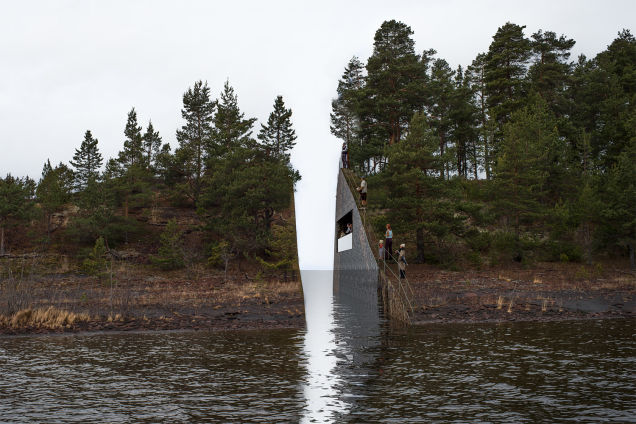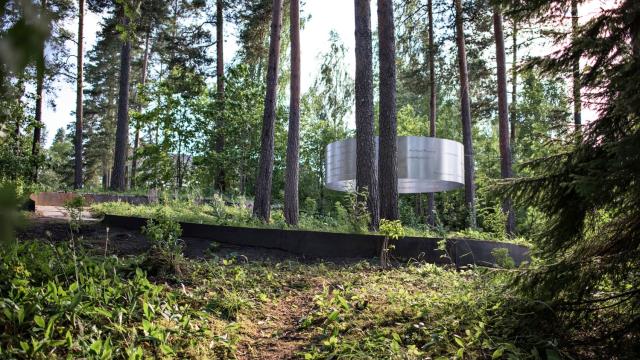Today marks four years since a gunman killed 77 people in Norway, 69 of them on the small island of Utøya. In time for the anniversary, the island has unveiled the finished memorial to the victims. But it’s not the memorial officials had originally planned, and the reason why illustrates how difficult memorialising can be.
In May of 2014, we wrote that Norway had selected a design for a permanent memorial on the island, created by a Swedish artist named Jonas Dahlberg. Dahlberg’s plan was dramatic; it required cutting away a huge slice of land from the island to create a thin, 21m wide channel where water could pass and where the names of the victims would be inscribed on the rock cliffs. The idea, he explained, was to create a piece of landscape art that would reflect the void or wound that was left to the victims’ families. “The cut is an acknowledgement of what is forever irreplaceable,” he said.

The plan was very well-received. Online, especially, it got a huge amount of attention. But in the end, the plan was postponed indefinitely — seemingly both because of criticism by locals and by concerns about how it would affect the area. In its place this week, officials unveiled today a different, smaller memorial called The Clearing: A band of steel with the names of the victims carved out of the metal, hanging in tension from tall pines around the area.
Designed by the Bergen-based architects 3RW, it’s a graceful and understated sculpture. But it’s interesting that Dahlberg’s memorial got so much attention yet was left behind — postponed, officially. So what happened? It’s unclear how families of the victims felt about the design, but this beautifully written — even when translated by Google — story in Norway’s Aftenposten about the process of grieving and memorializing on Utøya explains more about the long process of memorializing the attack, diving deep into the history of the island and the history of the AUF, the youth league of Norway’s labour party, which ran the summer camp on the island.
Helle Aarnes, the author of the post, explains that it’s been a long road to come to an agreement about what should happen to the island. One point of contention, in particular, was whether the camp’s buildings should be razed and rebuilt, or whether they should be preserved as sites of grief and remembrance. The AUF even invited experts on memorial design to visit, including Alice Greenwald, who directed the 9/11 Memorial.
The Clearing was actually discovered by the father of one of the victims, and as Aarnes explains, “he wanted to participate in the process of constructing a memorial there. It was decided that the site must meet two requirements: No atrocity should have taken place there, and visitors should be able to withdraw and have a moment of privacy there.”
The families of the victims participated in clearing and building the site, working to create the site and the long winding path down to the clearing themselves. Here’s how the architects explain the importance of the volunteers:
Just by facilitating volunteer efforts and the division of labour, we believe that it can add up to a good process, where the construction of the memorial can also be a part of grief processing, and provide a special relationship to the place of those involved.
The process apparently took a full 8000 hours of volunteering, much of it from families and friends, according to Aftenposten. Perhaps that’s why a smaller, less grand memorial was selected for the island: It was built by the families and friends of the victims.
The process of building it, it seems, was just as important as the “it”. The original, very dramatic memorial may have spoken to the outside world about the atrocities that took place on the island, and perhaps to the families and friends of the victims as well. But in the end, the people who were closest to it decided to make their own.
You can read Helle Aarnes’ full story about the process of returning to the island here.
Picture: © 3RW and by Martin Slottemo Lyngstad, via Arch Daily
